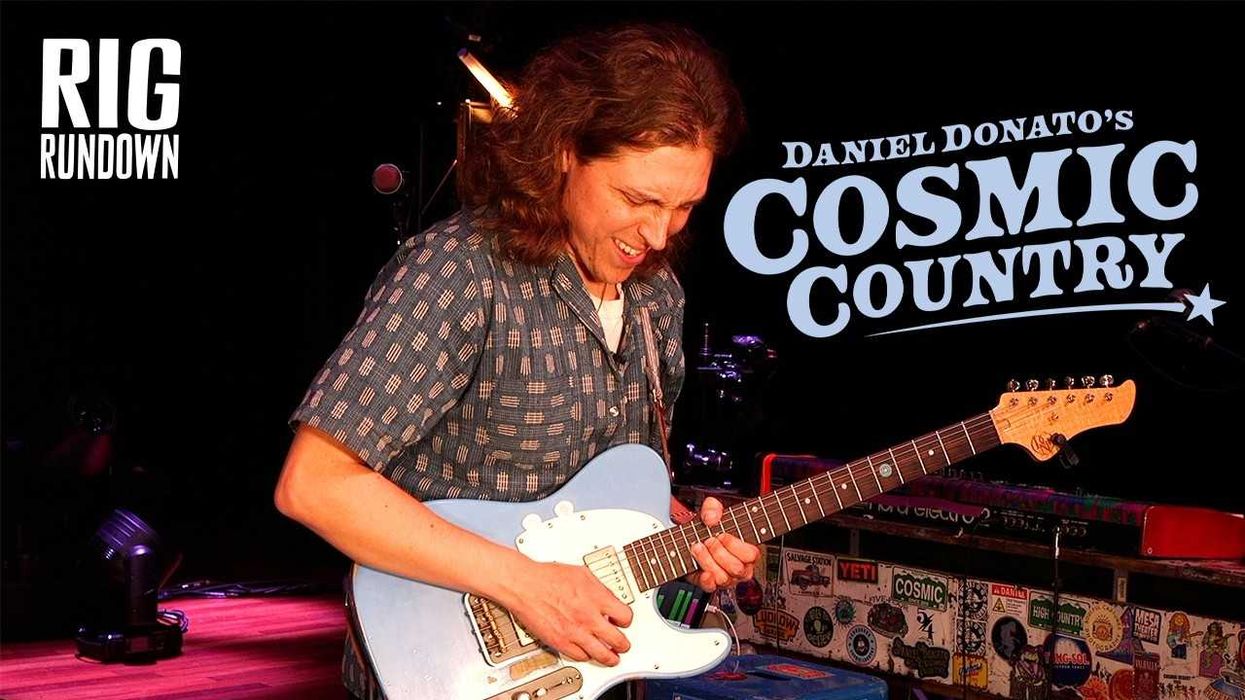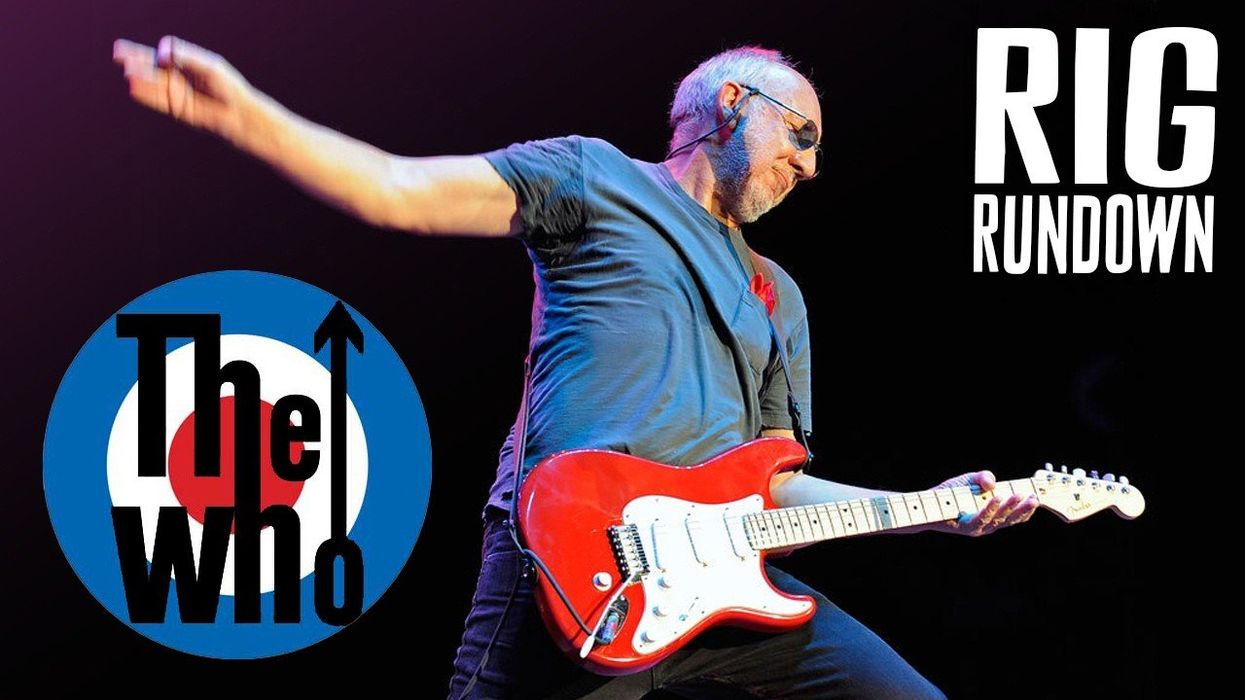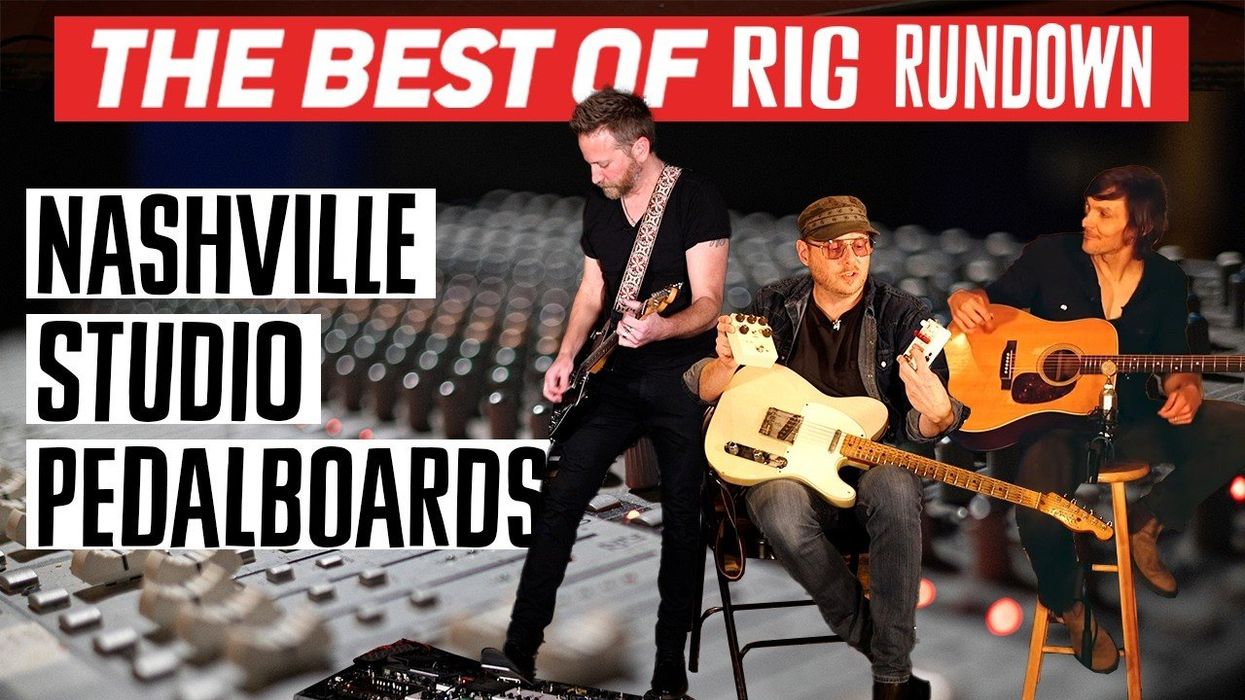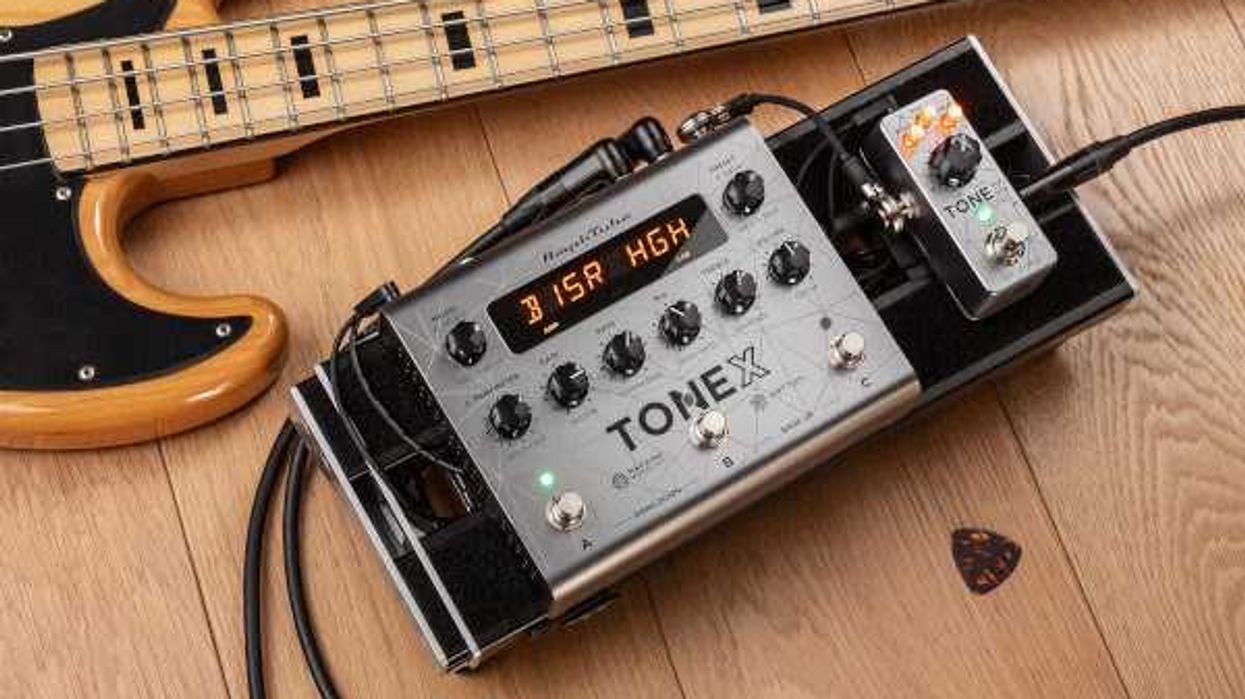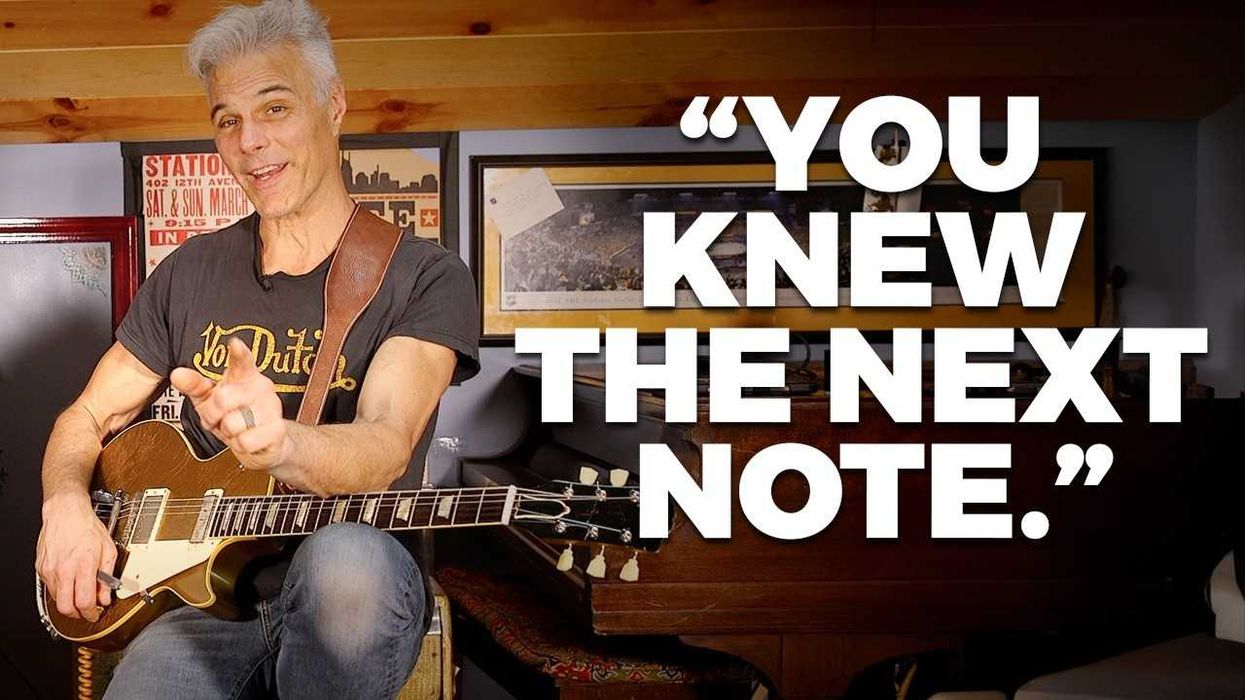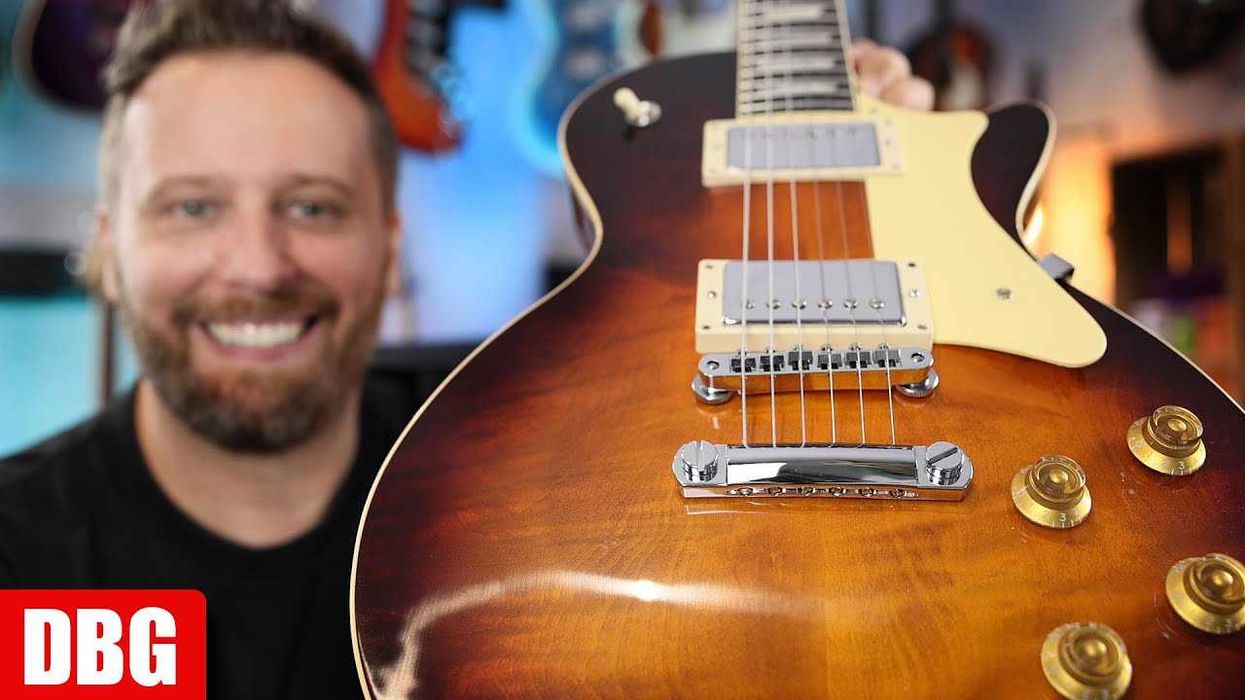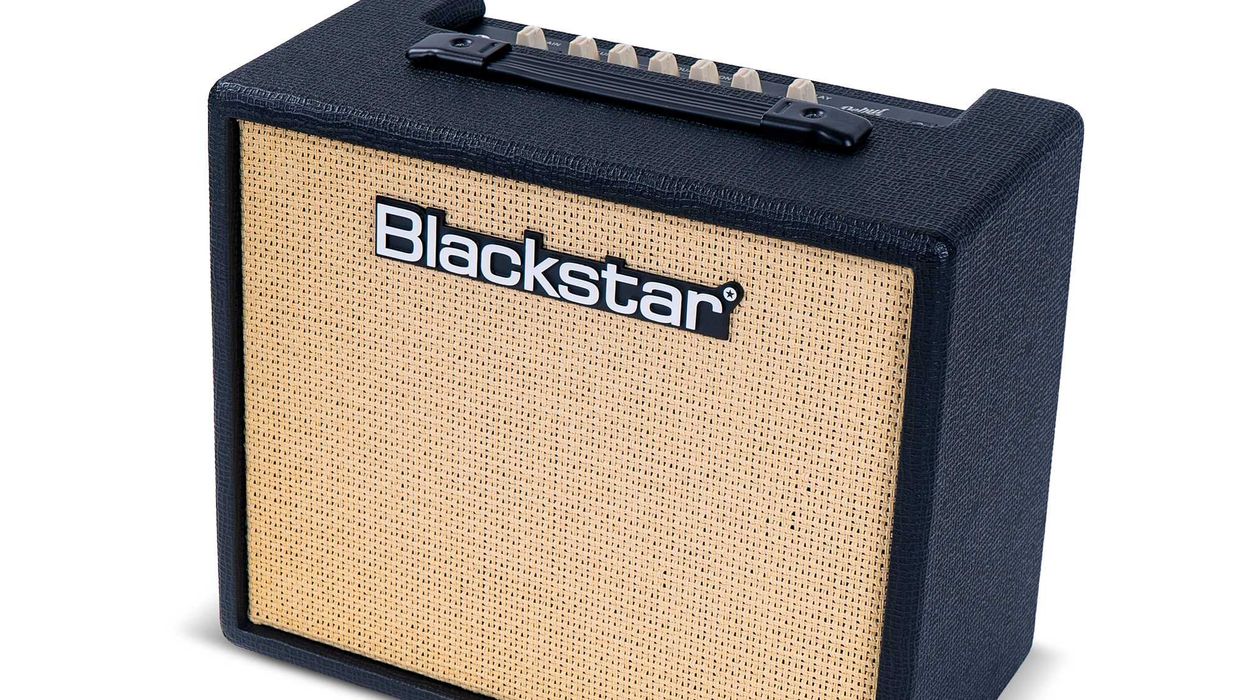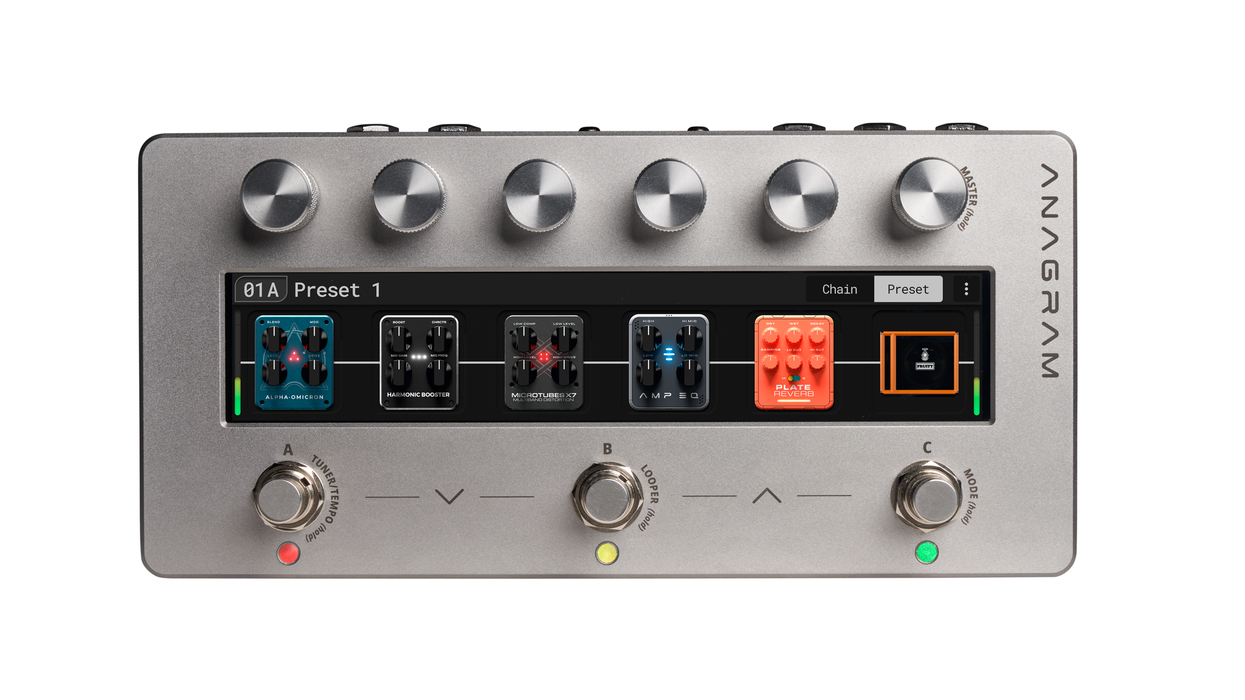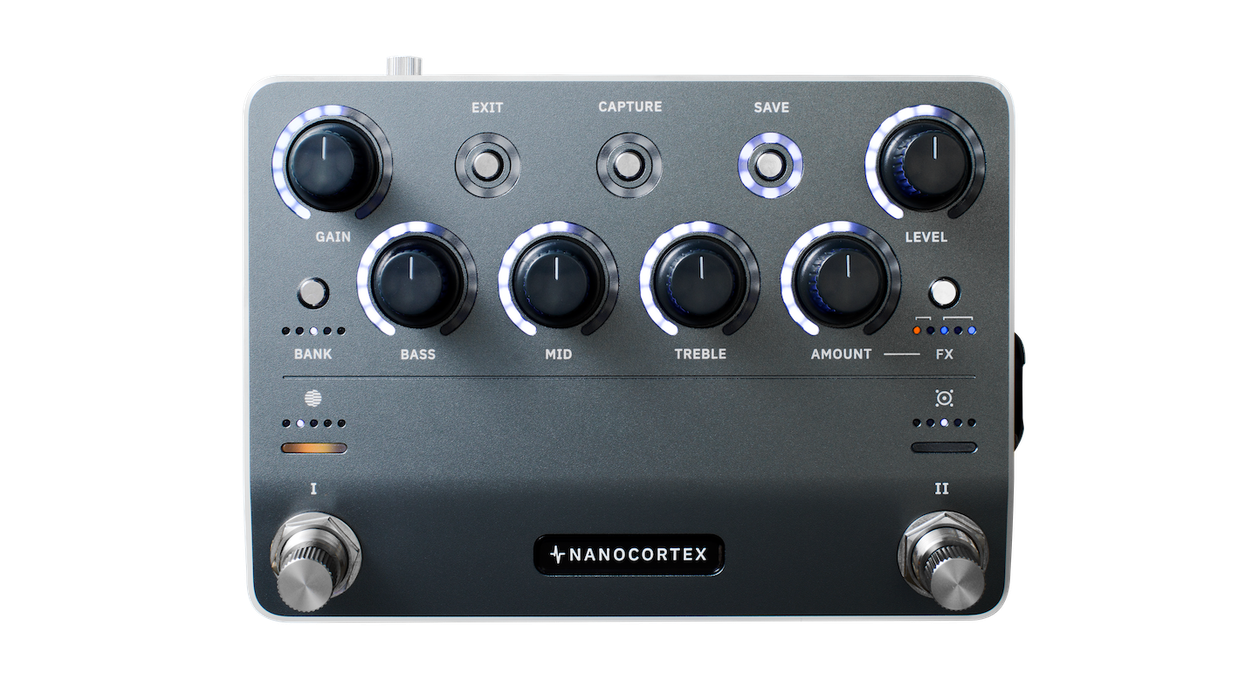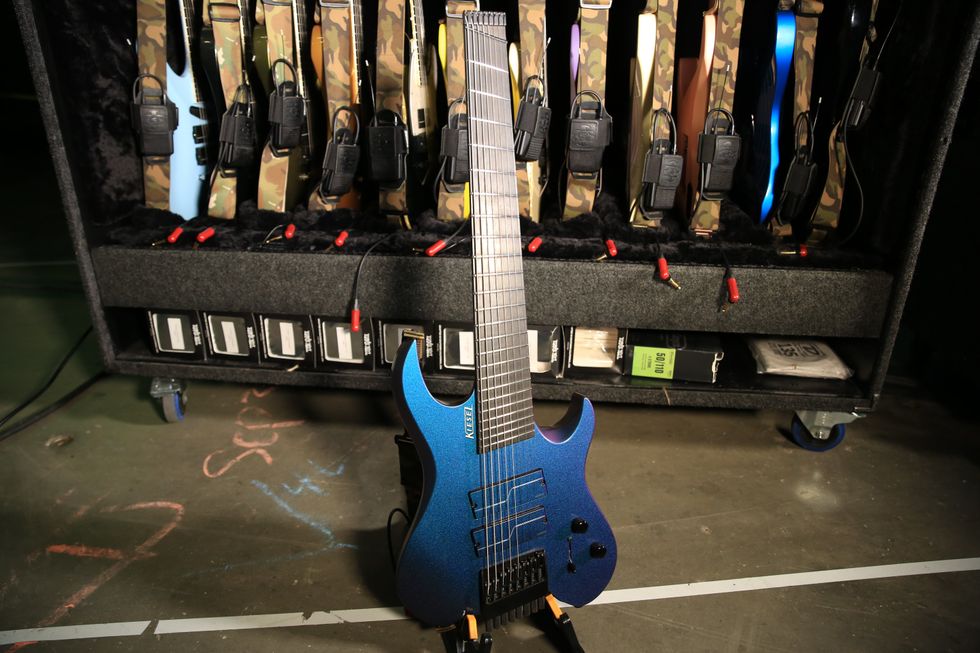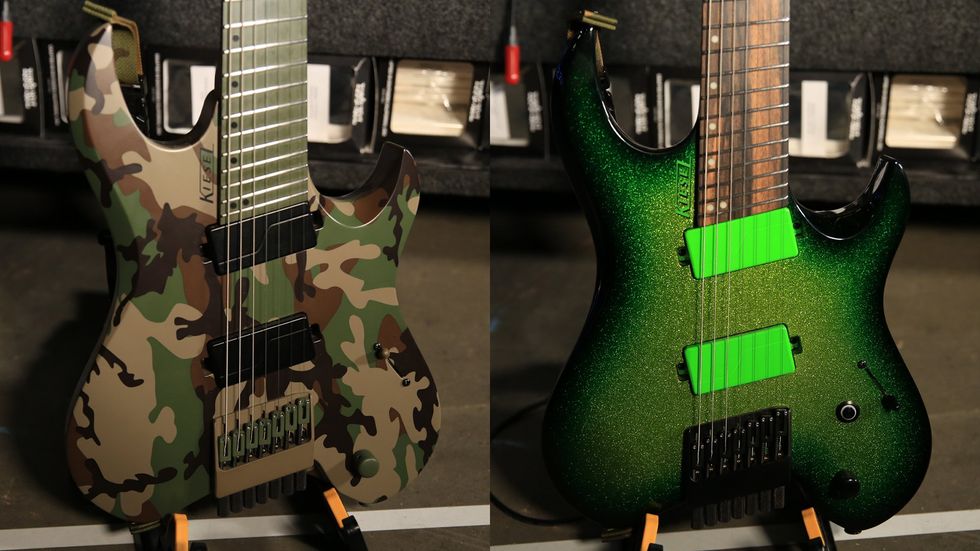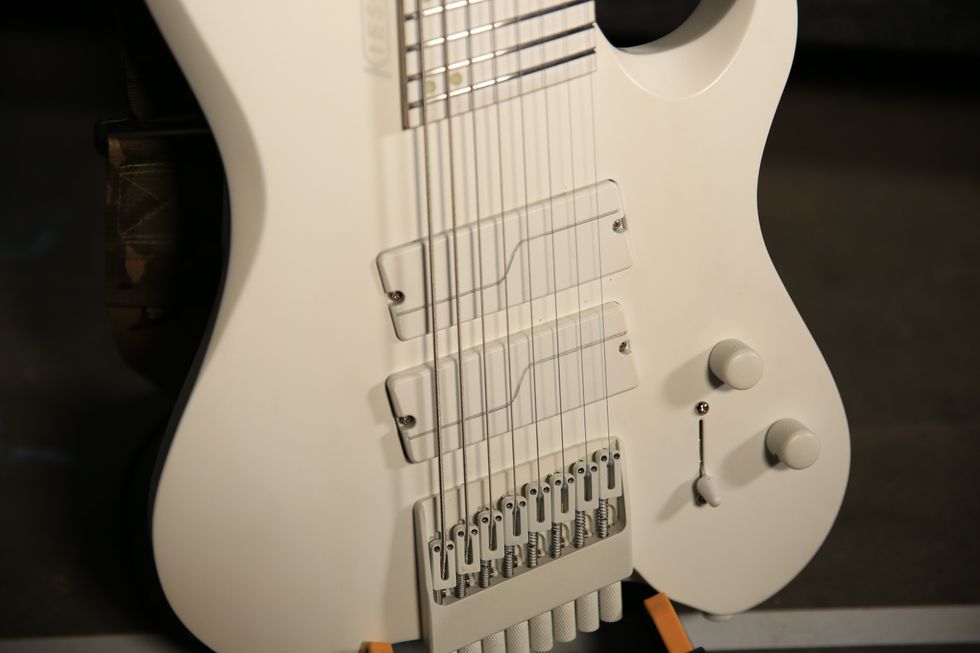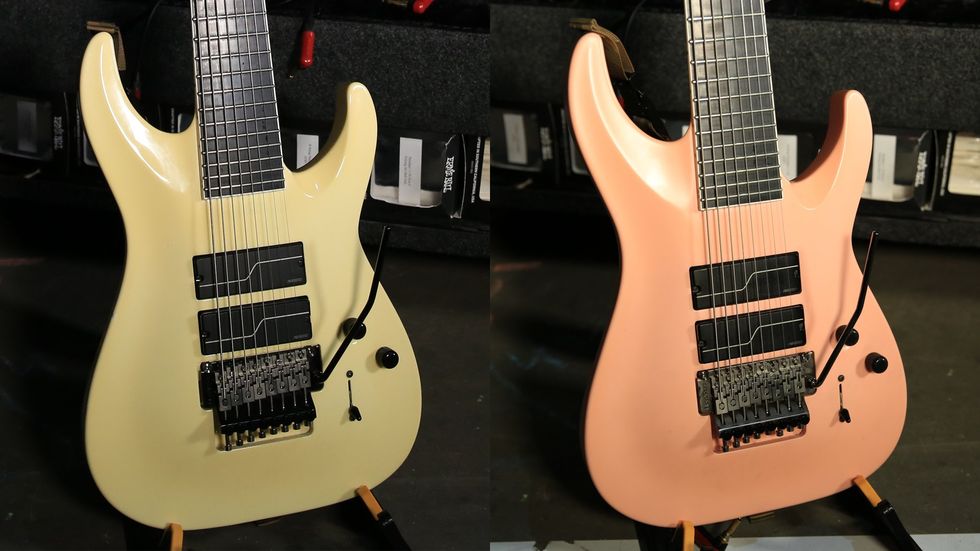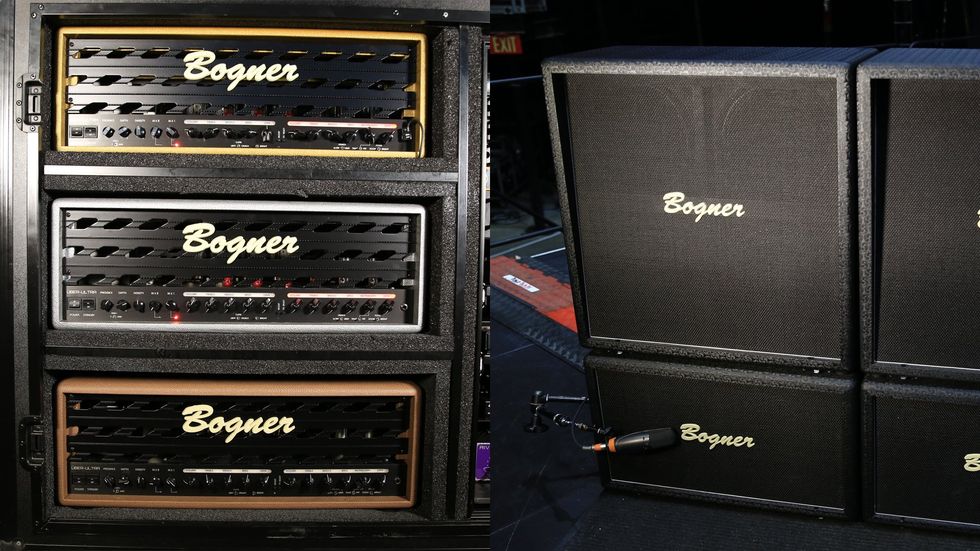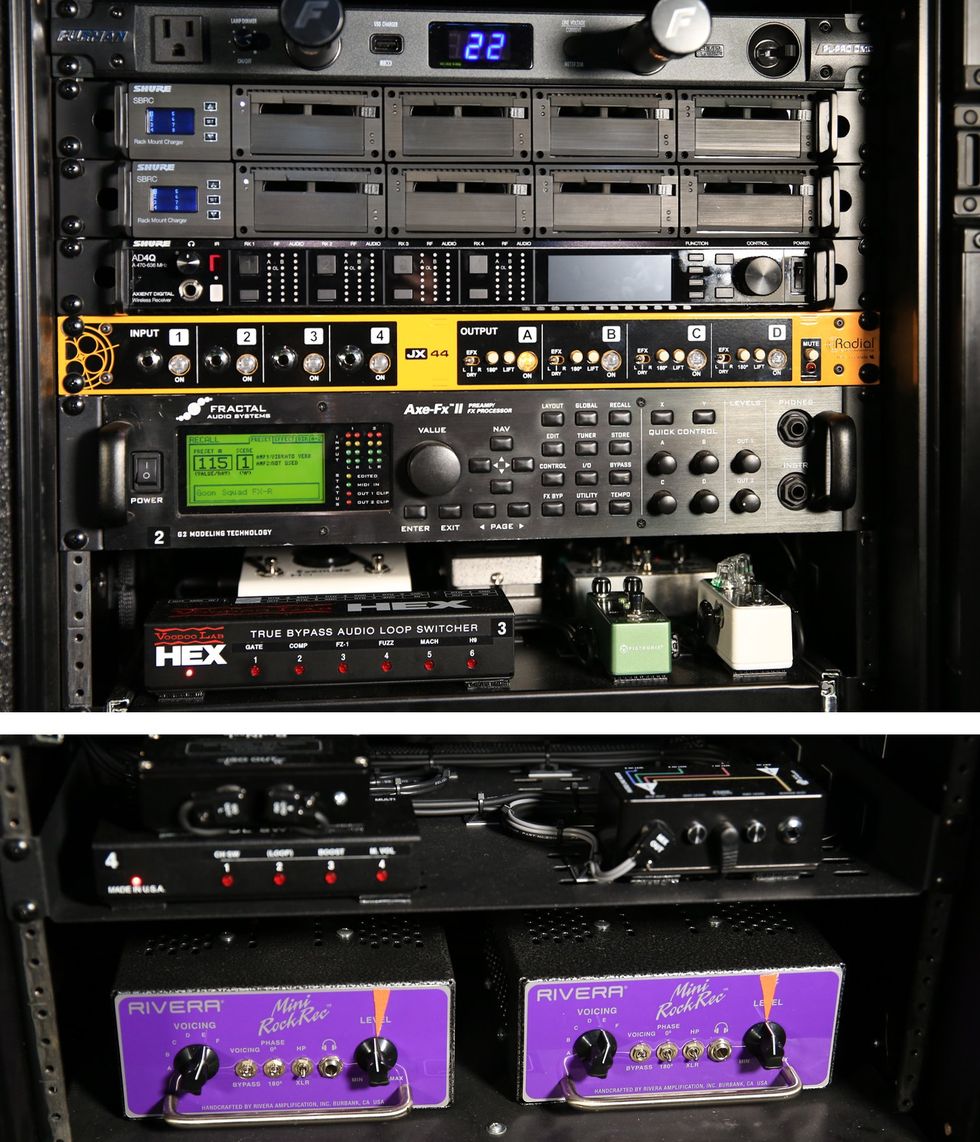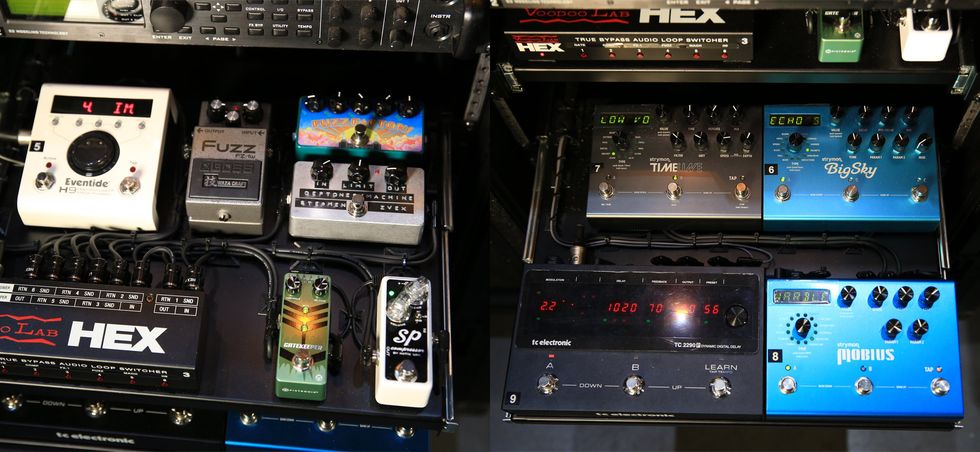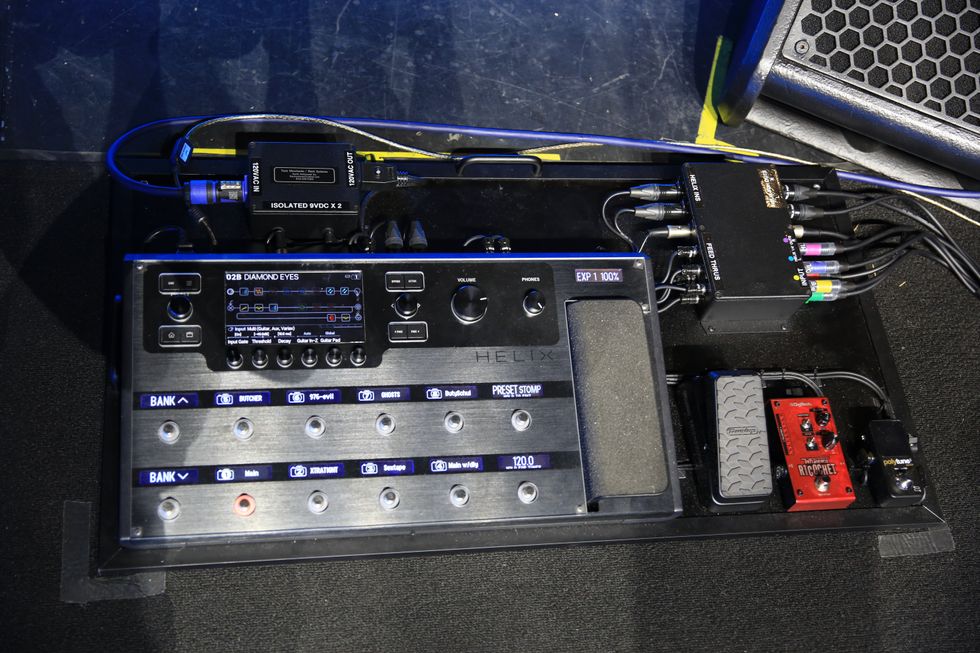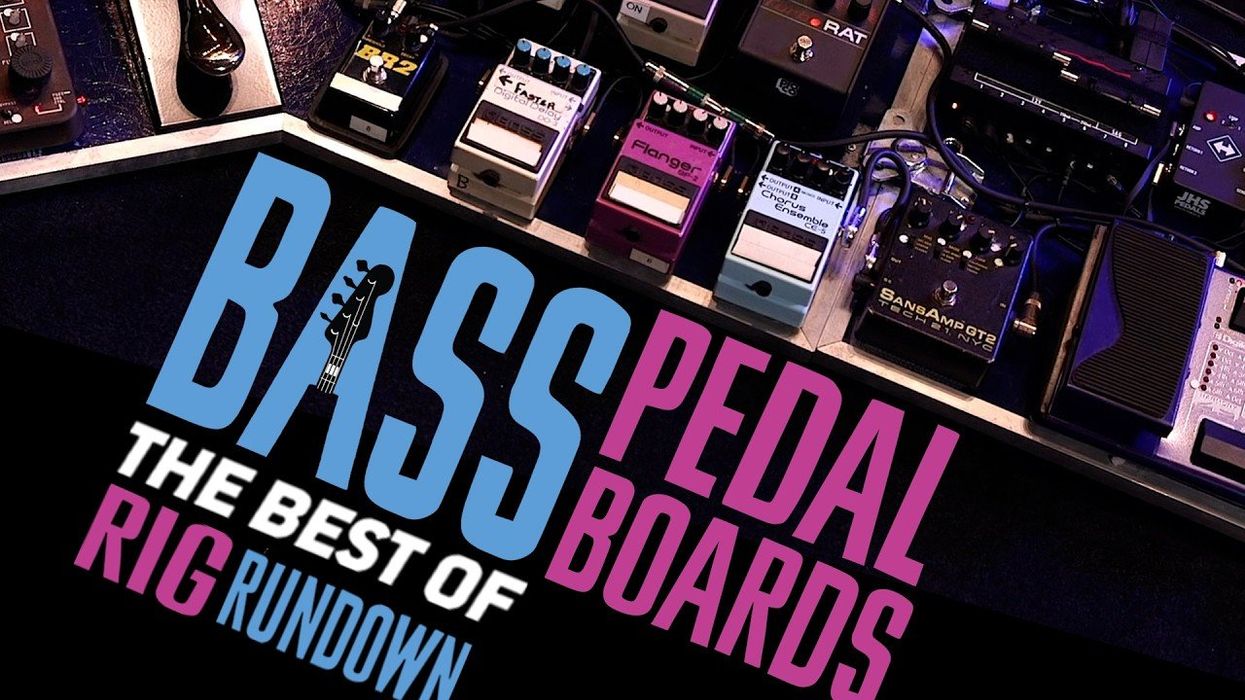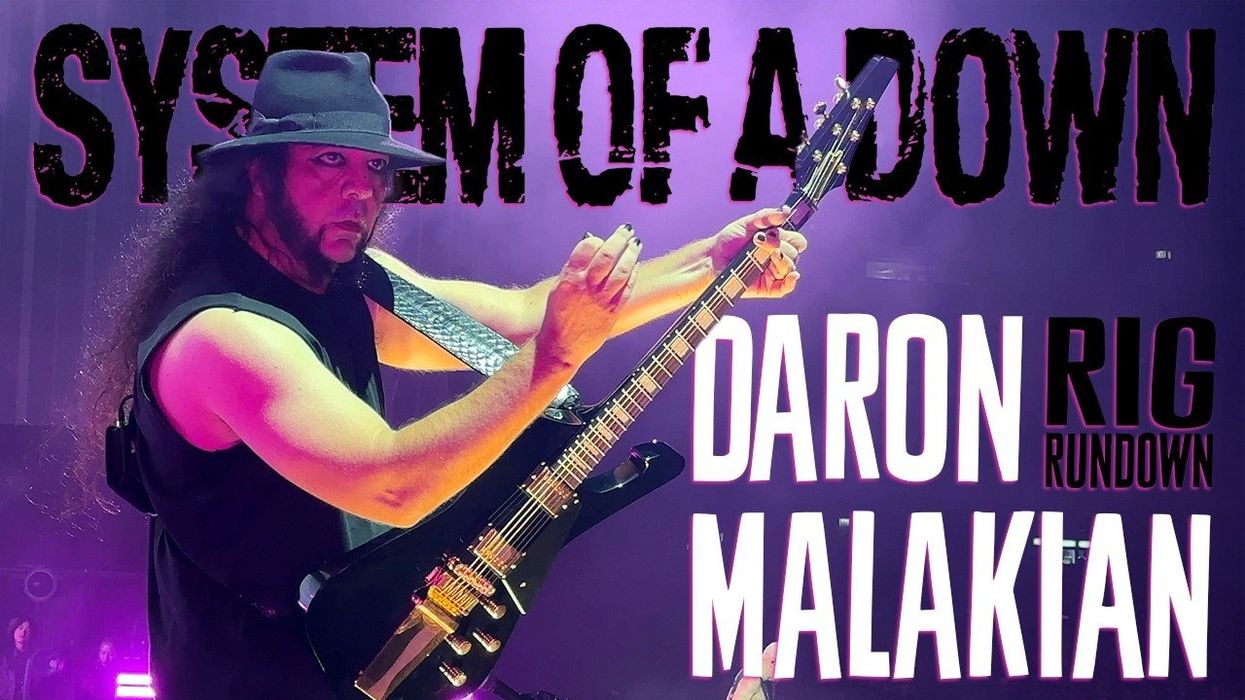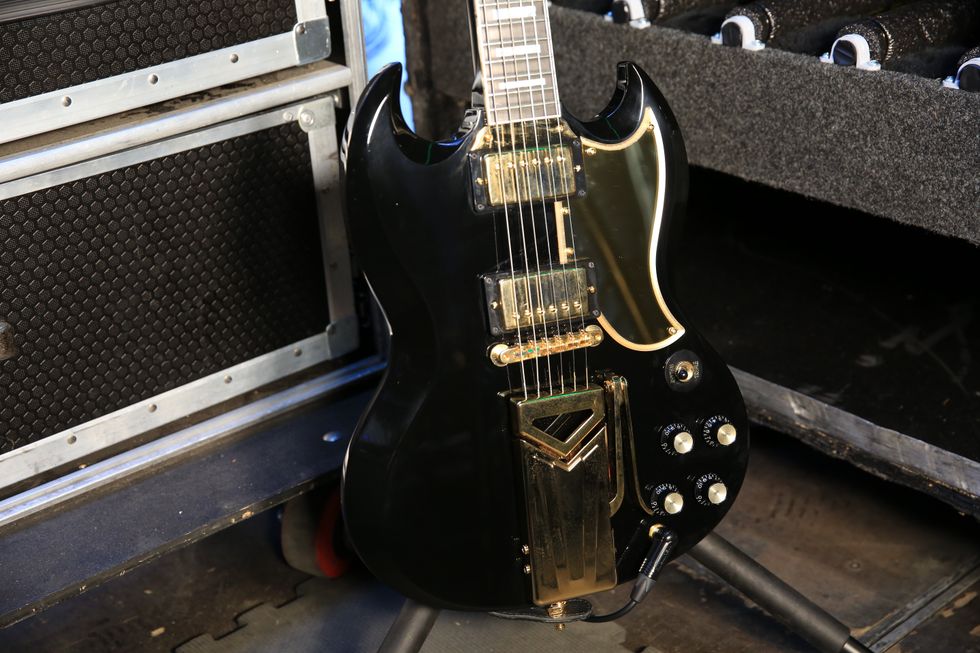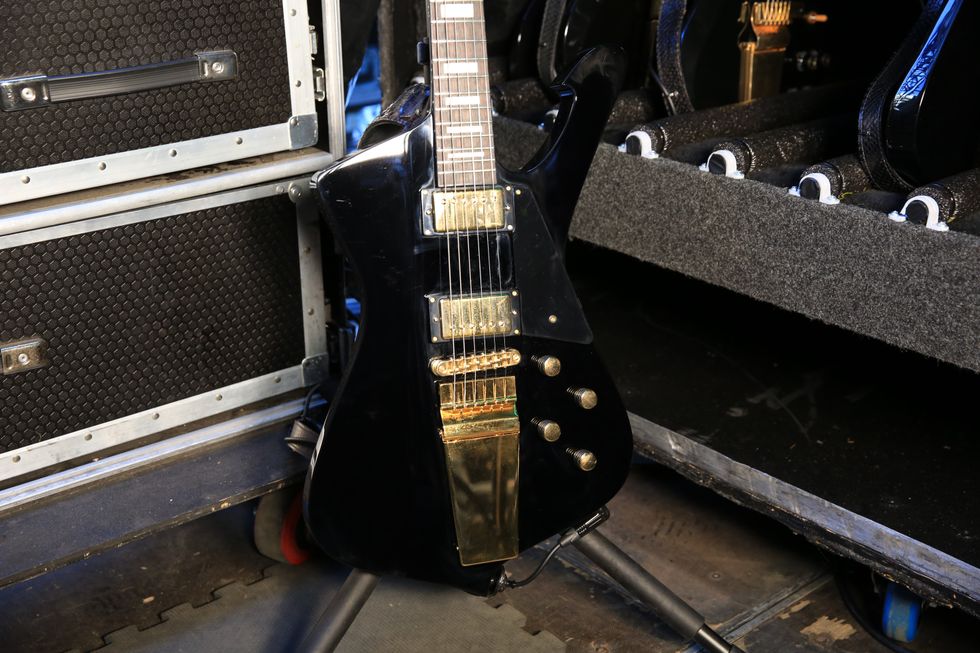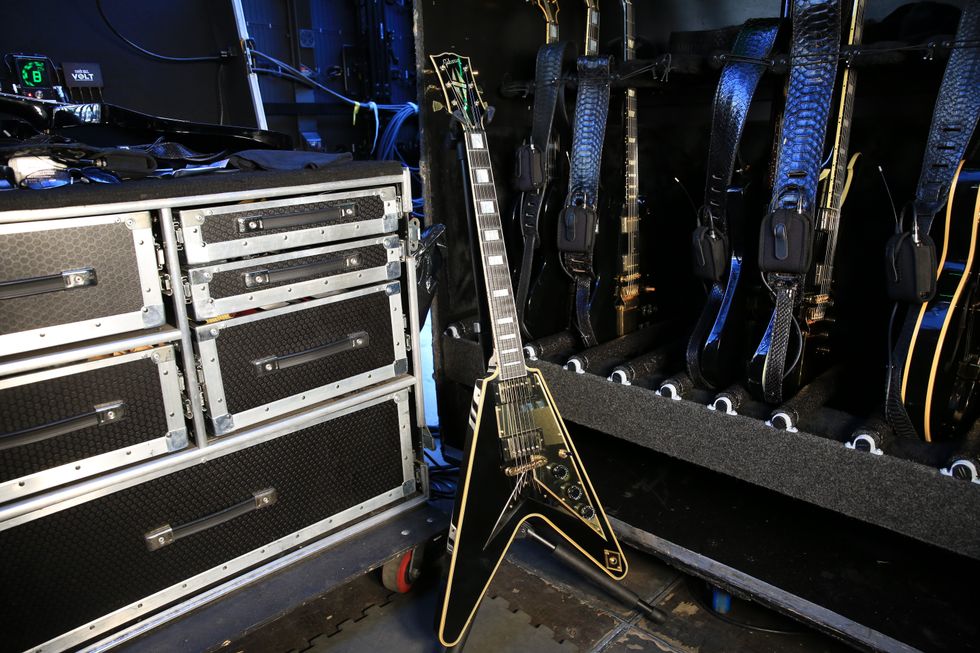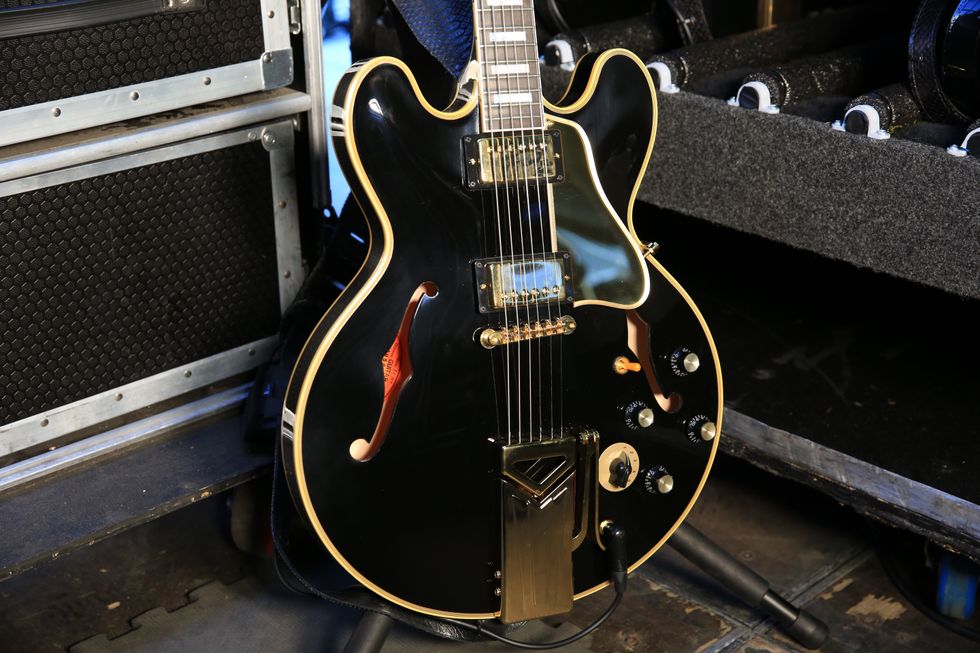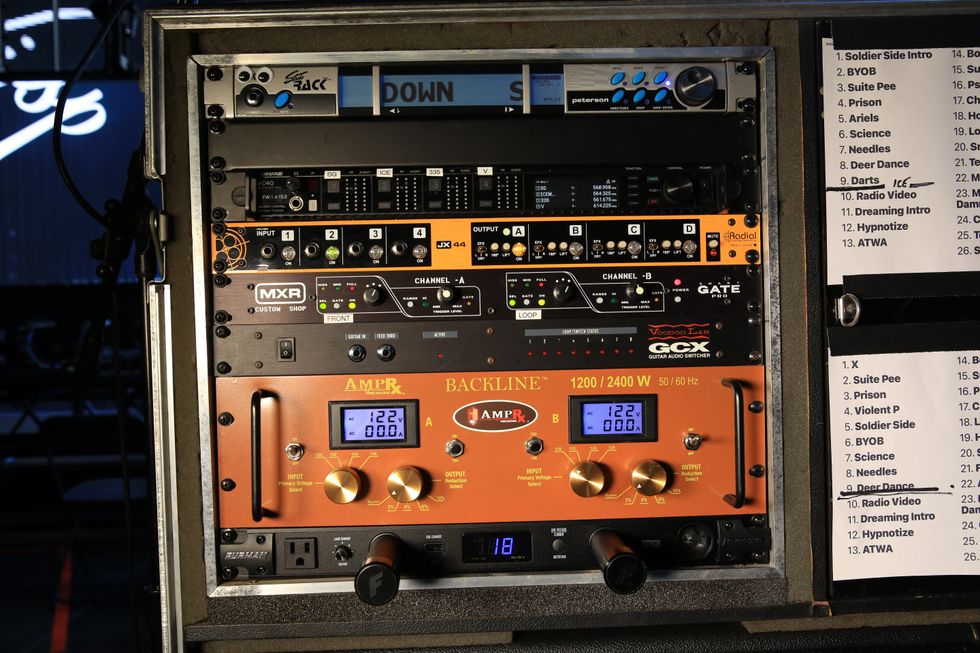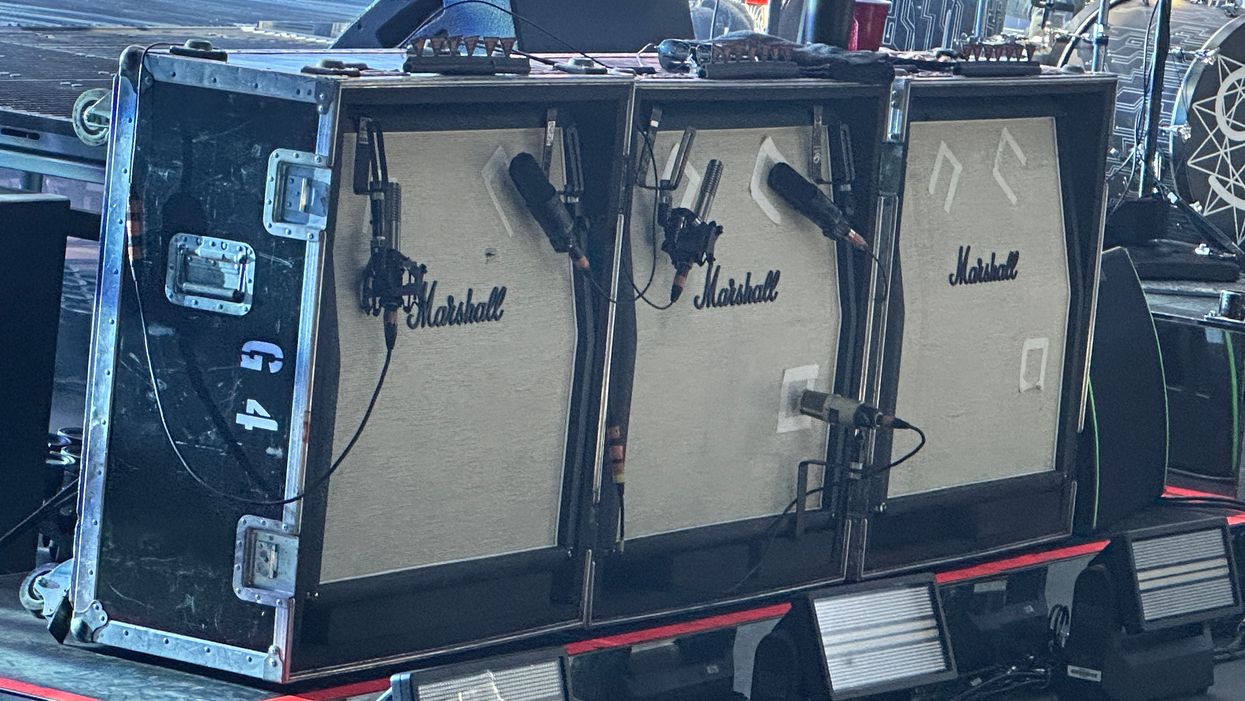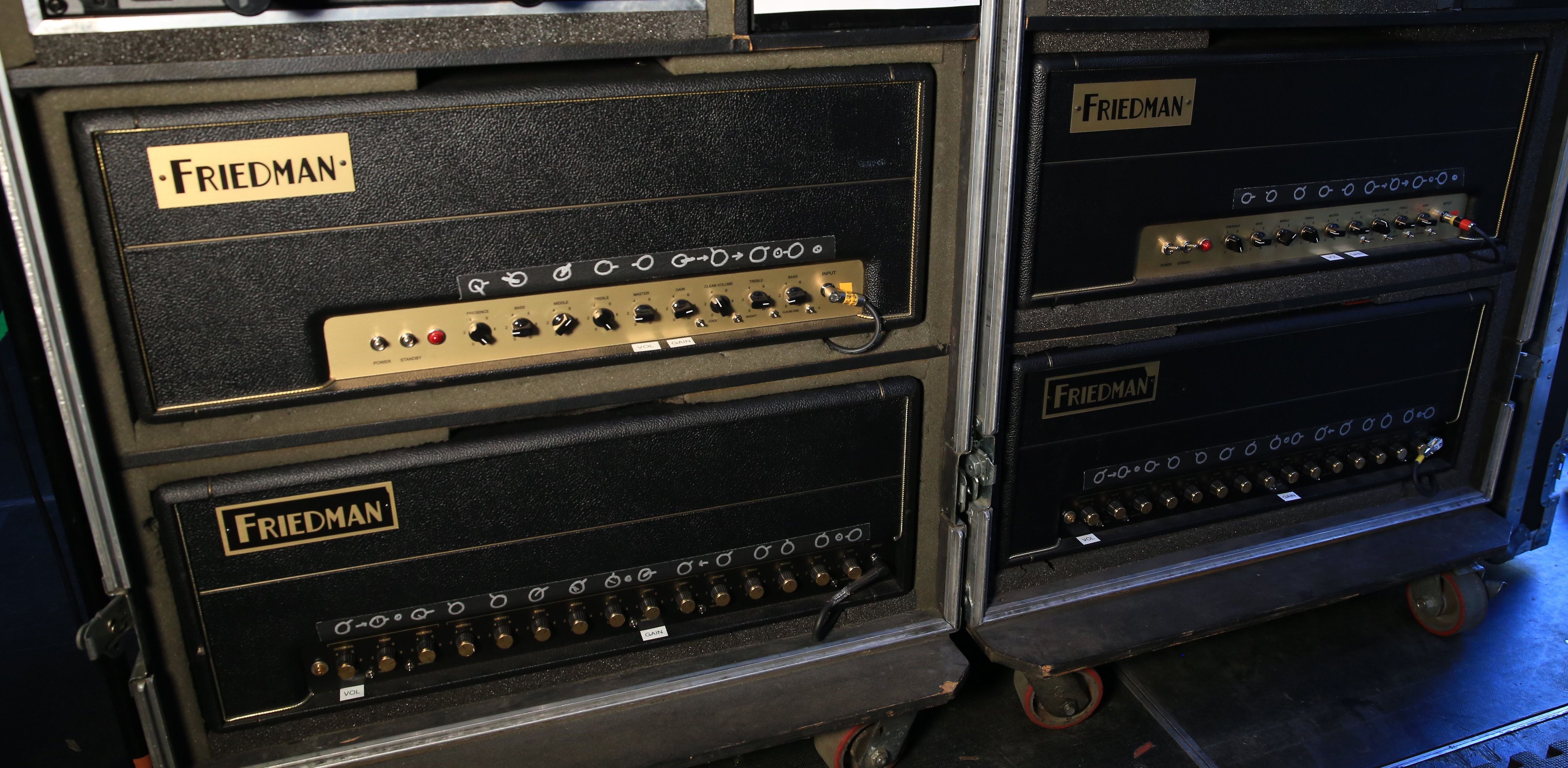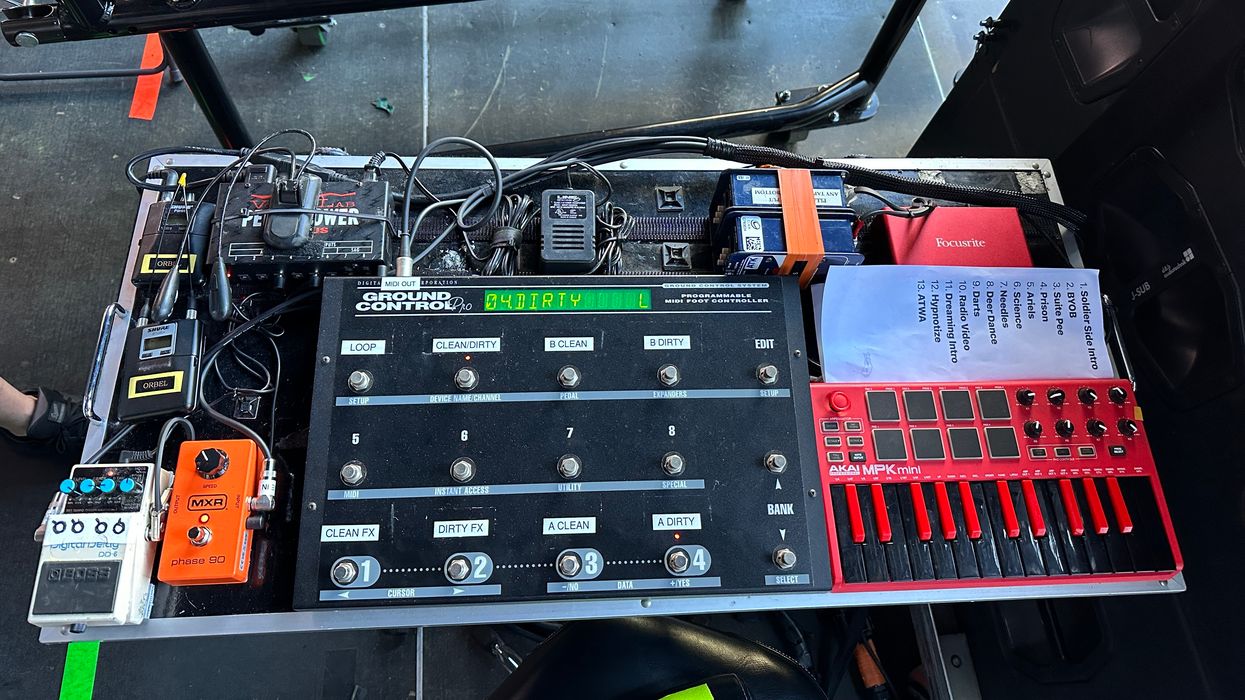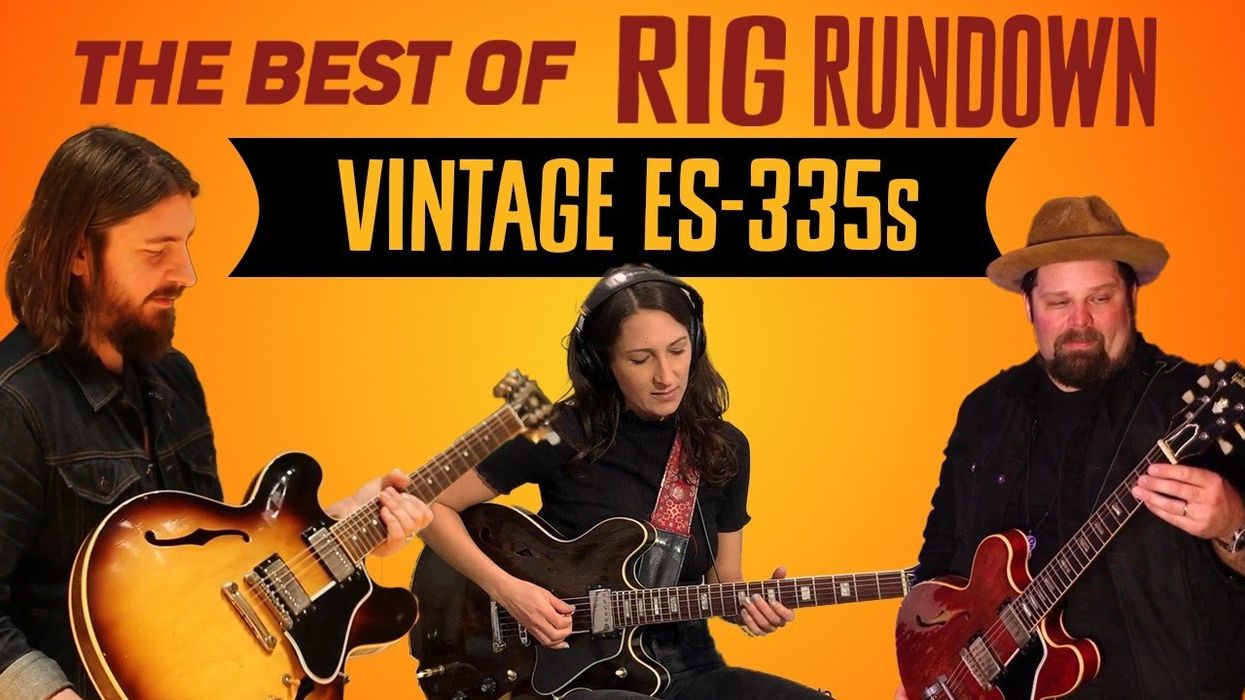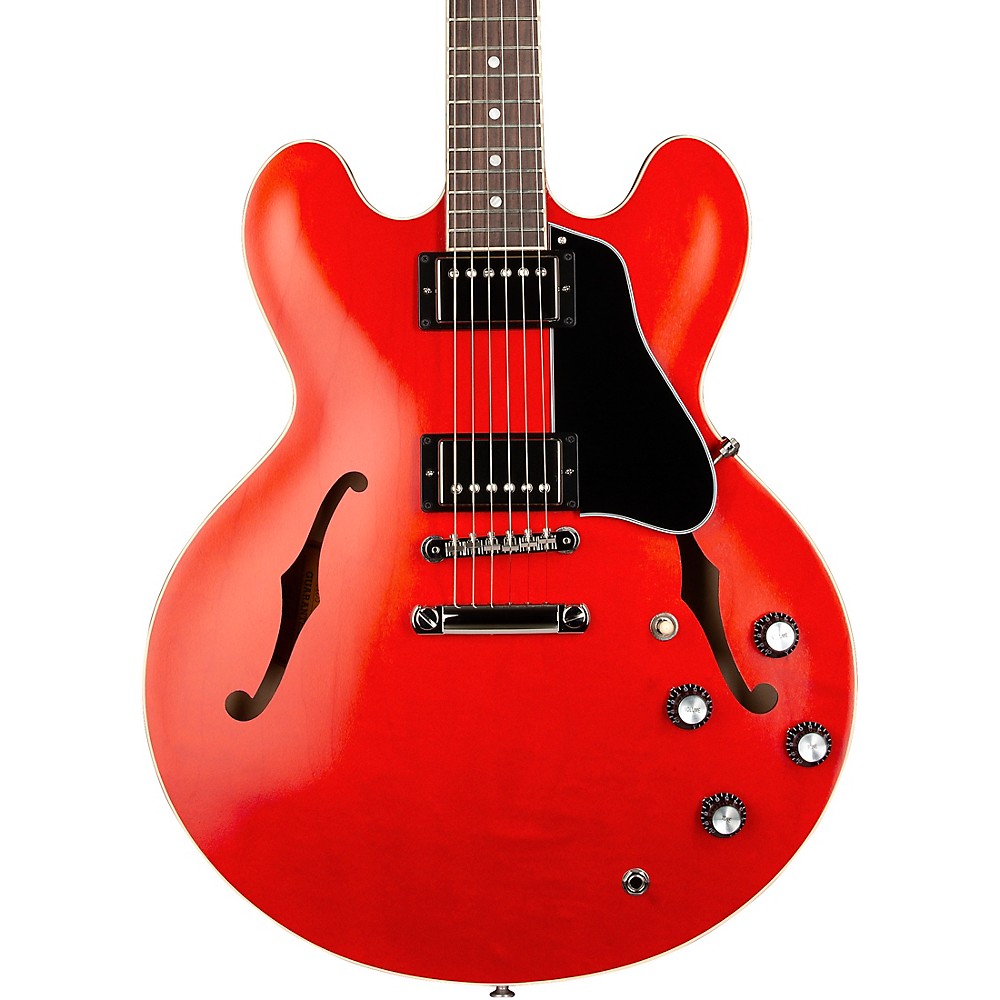Whether it’s slapping on TikTok, headlining solo tours, performing with Jack Antonoff and Olivia Rodrigo, or improvising over her DJ set, this badass player just needs a Jazz bass to get the party popping.
Swarms of musicians and guitarists have found social media’s current 60-second attention span inspirational and fruitful. But what happens after that first minute? Well, for TikTok bass tycoon Blu DeTiger, you become a shooting star. However, her story isn’t that sudden or serendipitous. She’s been working towards the spotlight since she first picked up the bass to jam with her drummer brother, Rex, at age 7.
“He was playing drums and I wanted to play an instrument,” recalls DeTiger. “As a girl, I thought guitar was ‘mainstream’ because I saw that everywhere and thought bass was rare and it would be more unique to play. I fell in love with it and my passion took over.”
Further fanning her musical flame, she joined School of Rock and performed semester-ending concerts covering Zeppelin, Bowie, Prince, the Stones, and others. She collaborated and performed with Chromeo and Jack Antonoff’s Bleachers. Inspired by horn-playing DJs, she even toted her bass to DJ gigs, where she laid down the funkiest lines she could muscle out over the top of her playlists.
“I saw people playing saxophone or trumpet over songs they were DJ-ing and I had really never seen bass used in that context. Bass is fire and it should feel good in a club because of the low frequencies hitting you.” An added benefit of the symbiotic sets was elevating her improvisational skills.
Then, the pandemic hit and DeTiger took to social media, finding a creative outlet on TikTok by adding dance-y flourishes and bouncy thunder to classic tracks. She earned a spot helping announce Fender’s Player Plus P and scored a deal with ALT:VISION Records, releasing the How Did We Get Here? EP in early 2021. She’s since graduated to being an UMG Recordings/Capitol Records artist and continues to embrace the snippet culture by churning out singles: “Blondes,” “Blutooth,” “enough 4 u,” “Crash Course,” and “Hot Crush Lover.” Yeah, you might only see 60 seconds of her talent before the algorithm pushes you by, but she’s put in years of sweat to get this far. What’s the plan going forward? To throw one helluva party, of course!
Ahead of her headlining set at Nashville’s Basement East, the booming bass star jumped at the chance to give her eager fans what they’ve been asking for—a Rig Rundown. In the chat with PG’s Chris Kies, she covers why she saw the bass as an underdog, how a Jazz tops a P bass, and explains the reason behind not going through her “crazy pedal phase” yet.
Brought to you by D’Addario XS Strings.
An Elite Gift for Blu
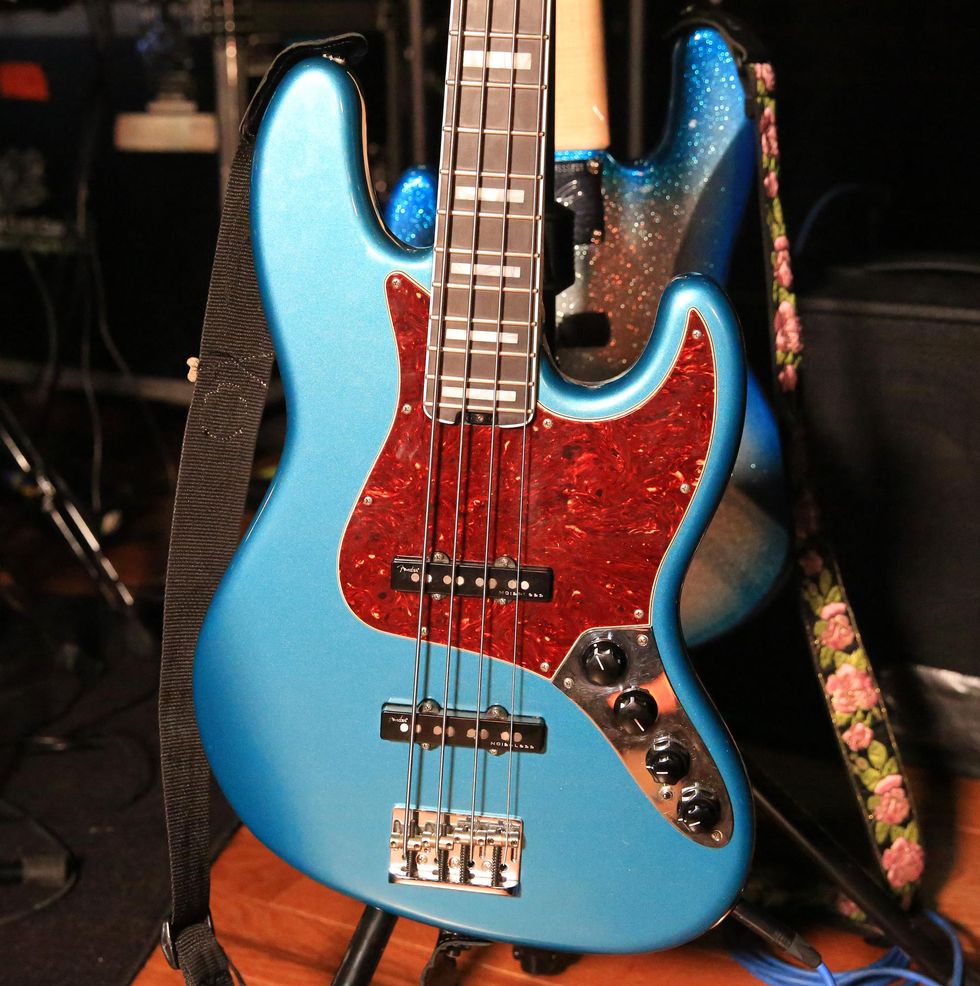
DeTiger was given this Fender American Elite Jazz Bass as part of her collaboration with the legendary brand. J-bass junkies might wonder what the 4-knob configuration brings to the table. There’s a standard master volume, pickup pan (subtly blending bridge and neck single-coils), treble boost/cut, mid boost/cut, and bass boost/cut. Additionally, there’s a mini toggle that engages an 18V active preamp. She notes that this was the first free piece of gear she ever received from any company, saying she “felt like I made it.”
Blue Jazz
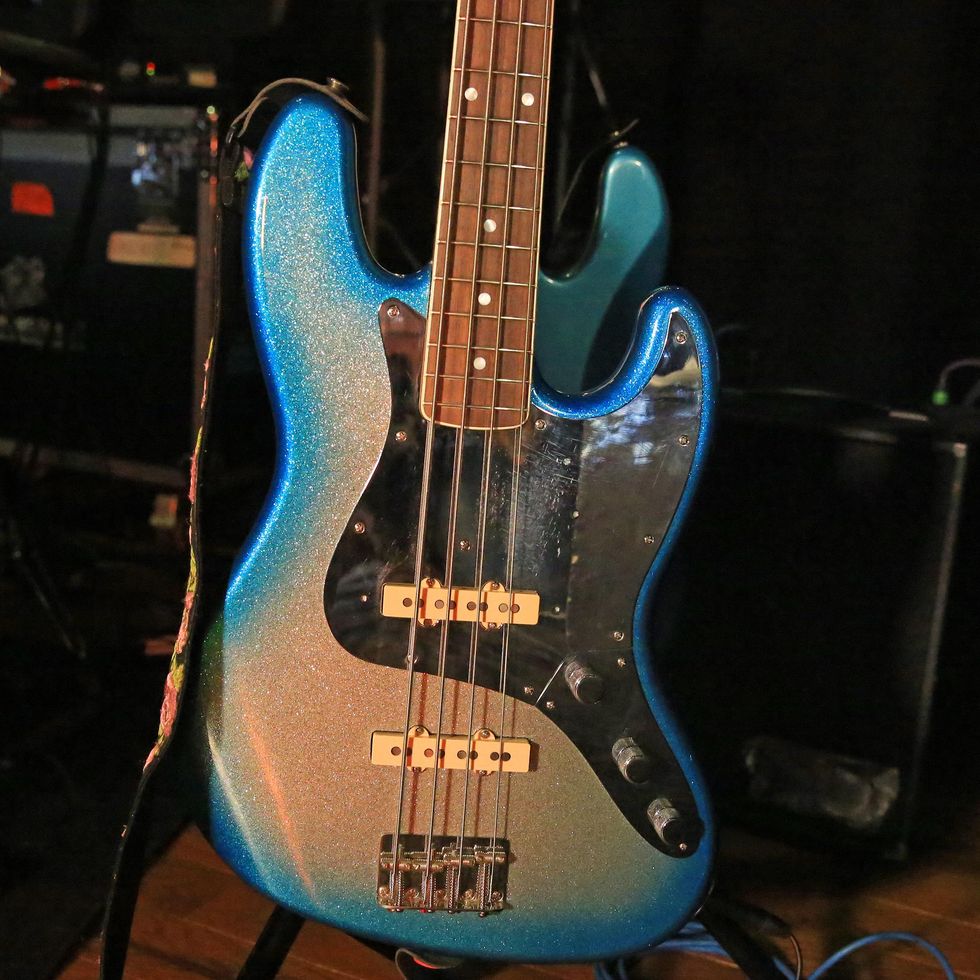
Here’s a custom Jazz bass that Fender put together for this blistering player. Some requested specs include a lightweight ash body, ’60s-style thin neck, matching headstock, mirrored pickguard ala Nile Rodgers’ 1960 “Hitmaker” Strat, and ’70s-style Jazz bass single-coils. (Check out the cover of her single “Hot Crush Lover” to see the pickguard adding artistic affect.) Both basses are laced with strings gauged .045–.105.
Strat Solo
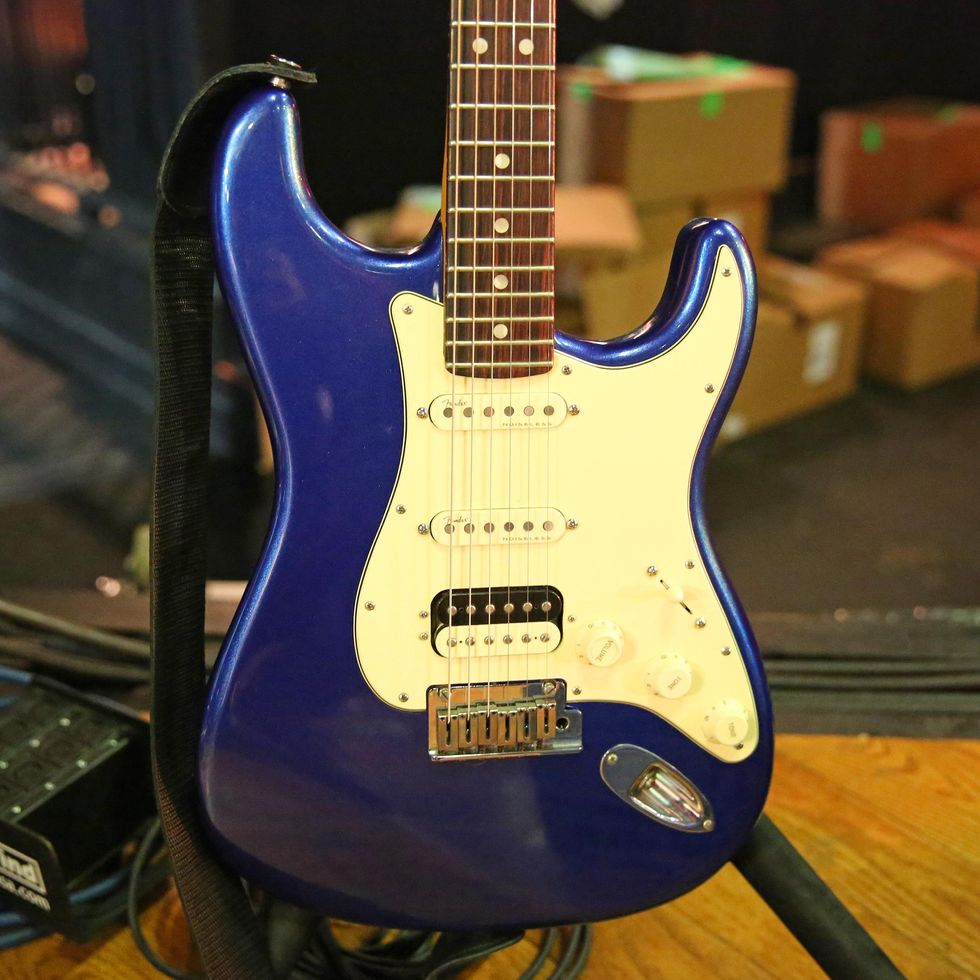
For “Kinda Miss You,” off her EP, Blu puts on this Fender American Ultra Stratocaster HSS and starts the song solo before brother Rex and the rest of the band fill out the mix.
Thumper
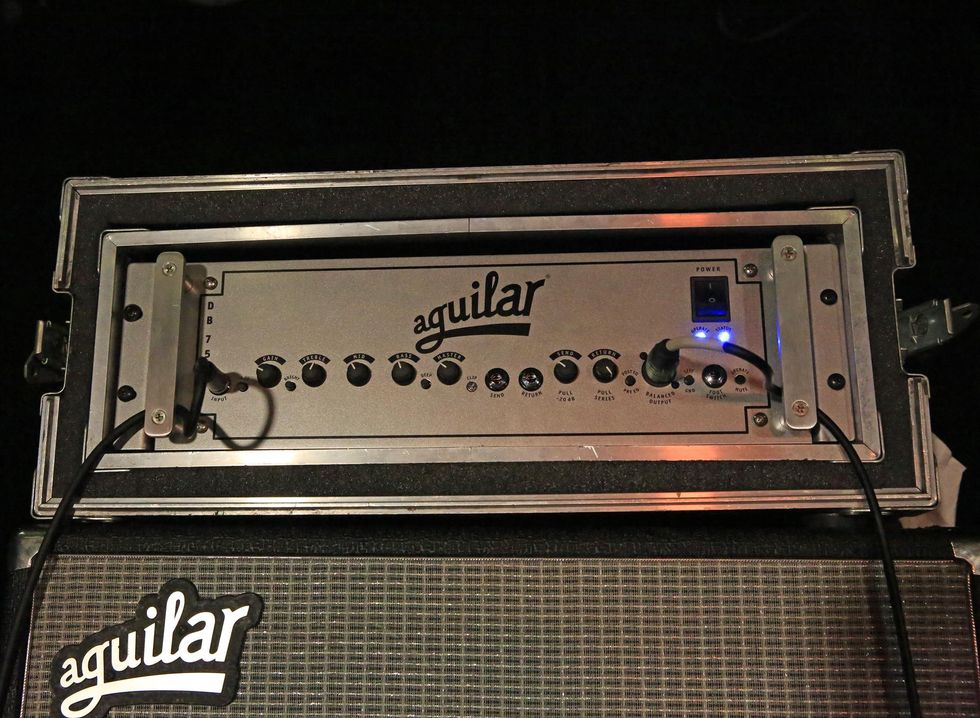
“The best my bass has ever sounded was through this amp-and-cab setup. The DB751 is so sick and just has the punch—you really feel it in your chest and that’s my favorite thing about bass. The hybrid head (three 12AX7s and a dozen lateral MOSFETs) powers a pair of Aguilar DB410 cabinets that have Eminence-designed speakers.
Blu DeTiger’s Pedalboard
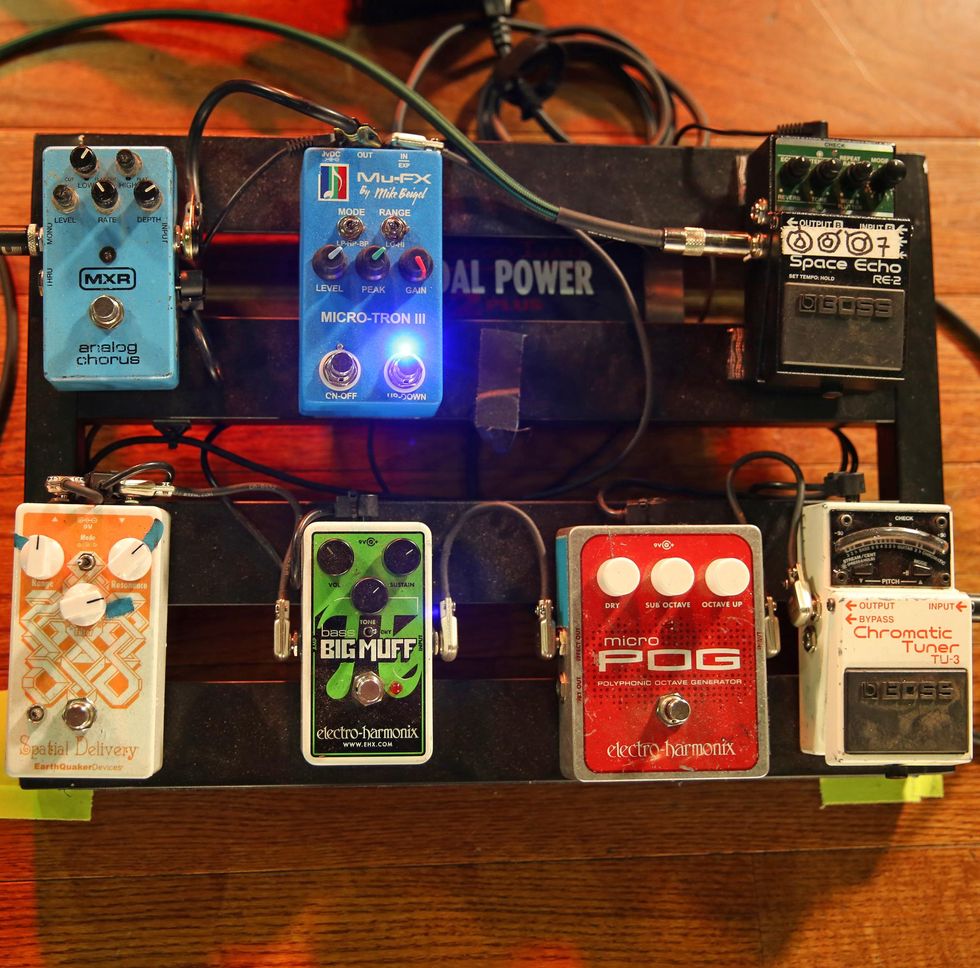
“I haven’t gone through that phase of using crazy pedals yet. Live I just really love the sound of a clean bass tone,” admits DeTiger. This cast of characters gets used for specific moments. She uses the octave up on the Electro-Harmonix Micro POG for “shredding” and the sub octave setting to “change the vibe for a second.” The Electro-Harmonix Bass Big Muff enhances some of the POG’s shadings with added stank. The EarthQuaker Devices Spatial Delivery is used for the funky intro to “enough 4 u,” her collaboration with Chromeo. She prefers the Spatial Delivery to the Mu-FX Micro-Tron III (which doesn’t get used at all now) and the MXR Analog Chorus is engaged for one instance. The Boss RE-2 Space Echo sees action with the Strat for “Sonic Youth freakouts” during “Kinda Miss You.” A Boss TU-3 Chromatic Tuner keeps all four strings in line and a Voodoo Lab Pedal Power 2Plus provides the volts.


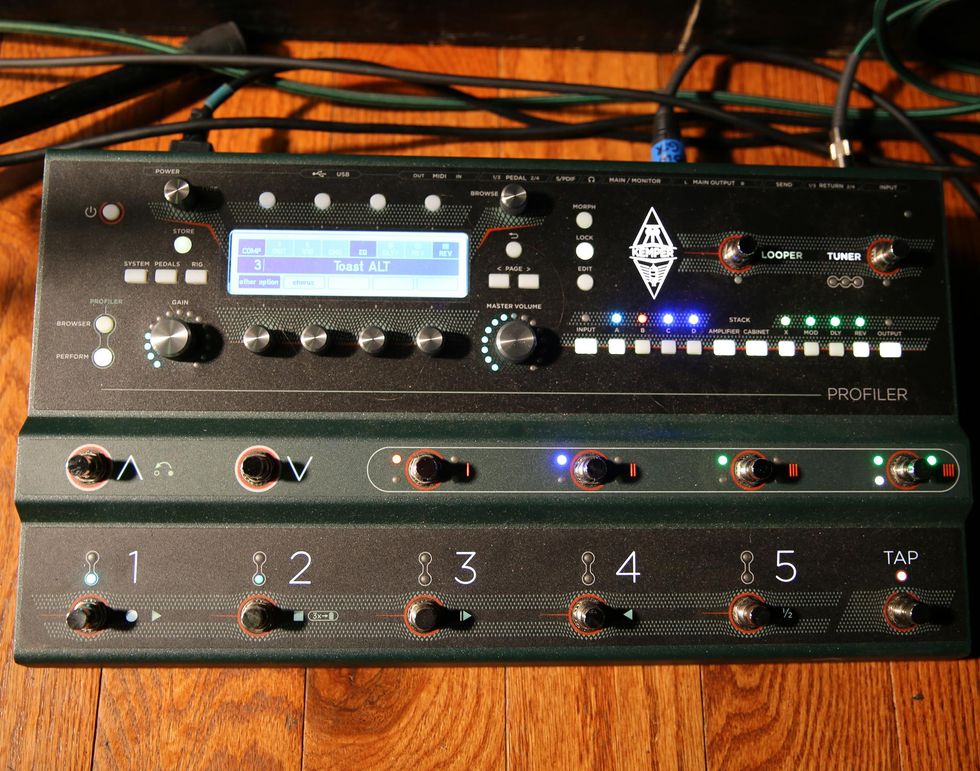

![Devon Eisenbarger [Katy Perry] Rig Rundown](https://www.premierguitar.com/media-library/youtube.jpg?id=61774583&width=1245&height=700&quality=70&coordinates=0%2C0%2C0%2C0)
